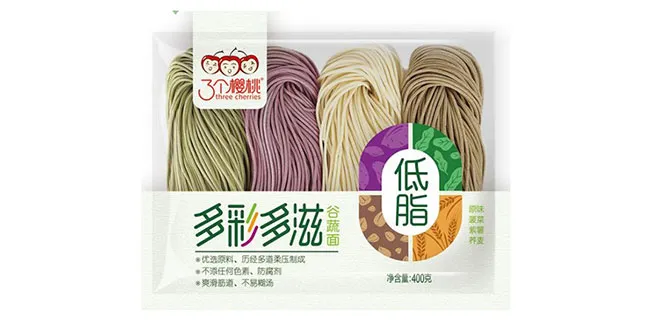Gluten-Free Soba Noodles for Healthy and Delicious Meals
Exploring Gluten-Free Soba Noodles A Healthy Alternative
Soba noodles, traditionally made from buckwheat flour, have gained popularity in recent years as a versatile and nutritious option for many dietary preferences. However, it’s important to note that not all soba noodles are gluten-free. For those who follow a gluten-free diet due to celiac disease, gluten sensitivity, or personal choice, it’s crucial to choose the right type of soba noodles. In this article, we will explore what gluten-free soba noodles are, how to prepare them, and some delicious recipes that can be made using this wholesome ingredient.
What Are Soba Noodles?
Originating from Japan, soba noodles have a distinct nutty flavor and a firm texture that make them a favorite in various dishes. The classic soba noodles are made primarily from buckwheat, which is a gluten-free grain. However, many commercial soba products on the market are blended with wheat flour, drastically reducing their gluten-free nature. Therefore, it is essential to look for 100% buckwheat soba noodles when seeking a gluten-free option.
Nutritional Benefits of Gluten-Free Soba Noodles
Gluten-free soba noodles are not only safe for those with gluten intolerance, but they also offer a wealth of nutritional benefits. Buckwheat is high in protein and fiber, making soba noodles a filling choice. They are rich in essential amino acids, particularly lysine, which is often lacking in many grains. Additionally, buckwheat contains antioxidants that can help combat oxidative stress and inflammation in the body.
Moreover, gluten-free soba noodles have a lower glycemic index compared to regular pasta, meaning they can be a better choice for individuals aiming to manage their blood sugar levels. With vitamins and minerals such as magnesium, manganese, and phosphorus, soba noodles can contribute positively to overall health.
Cooking the Perfect Soba Noodles
Cooking gluten-free soba noodles is straightforward, yet there are a few tips to ensure they come out perfectly. Start by bringing a large pot of water to a rolling boil. Add the soba noodles and stir gently to prevent them from sticking together. Cook the noodles according to the package instructions, which typically ranges between 4 to 8 minutes depending on the thickness.
soba noodles gluten free

Once cooked, quickly drain the noodles and rinse them under cold water to stop the cooking process and remove excess starch. This rinsing is crucial for achieving the desired texture, especially if the noodles are to be used in cold dishes or salads.
Delicious Recipes with Gluten-Free Soba Noodles
1. Cold Soba Salad Combine cooked and cooled gluten-free soba noodles with diced cucumbers, bell peppers, and shredded carrots. Toss with a dressing made from soy sauce, sesame oil, rice vinegar, and ginger for a refreshing salad.
2. Soba Noodle Stir-Fry Sauté your choice of vegetables such as broccoli, bell peppers, and snap peas in a skillet with garlic and ginger. Add cooked soba noodles and a splash of tamari for a quick and satisfying meal. Top with sesame seeds and chopped scallions for extra flavor.
3. Miso Soup with Soba In a pot, heat stock and whisk in miso paste. Add in tofu cubes and seaweed, then let it simmer. Finally, stir in cooked soba noodles for a warm, comfort dish.
4. Soba Noodle Bowl Layer cooked soba noodles with grilled chicken or tofu on top, along with steamed greens and a drizzle of spicy peanut sauce for a wholesome nutrient-packed bowl.
Conclusion
Gluten-free soba noodles provide a delicious and healthy alternative to traditional pasta dishes while offering a unique flavor profile and various potential health benefits. With a variety of ways to prepare and enjoy them, they can easily be incorporated into any meal. Whether you're making a quick stir-fry or a refreshing salad, gluten-free soba noodles are sure to please your palate while adhering to your dietary needs. Enjoy exploring this delightful and nutritious ingredient!
-
Unleash Your Inner Chef with Delectable Italian Pasta CreationsNewsAug.01,2025
-
Savor Health and Flavor: Irresistible Soba Noodles for Sale Await!NewsAug.01,2025
-
Nourish Your Body with Premium Organic Ramen - A Culinary Delight AwaitsNewsAug.01,2025
-
Elevate Your Dishes with Our Exquisite Kinds of Egg NoodlesNewsAug.01,2025
-
Dive into Flavorful Convenience with Our Ramen OfferingsNewsAug.01,2025
-
Discover Exquisite Types of Naengmyeon and Chilled Soba NoodlesNewsAug.01,2025
-
Is Whole Wheat Pasta Healthy?NewsMay.30,2025
Browse qua the following product new the we

















































































































